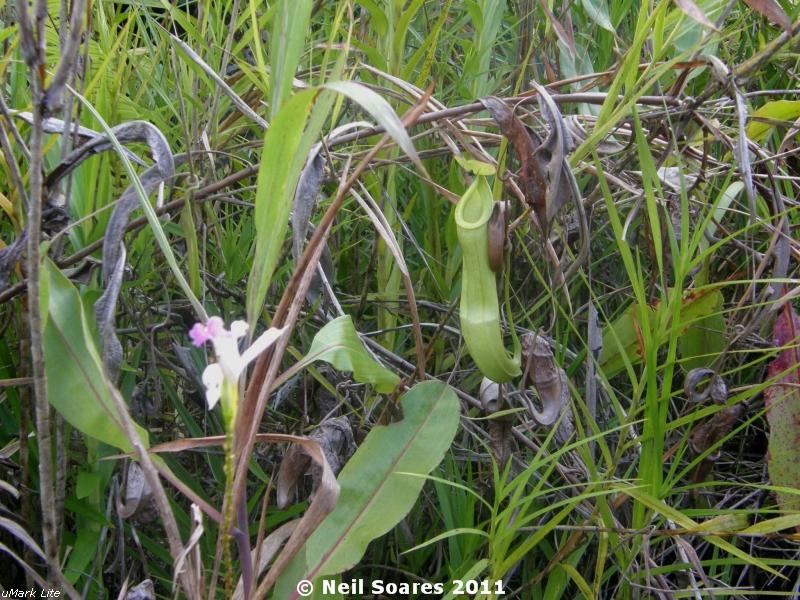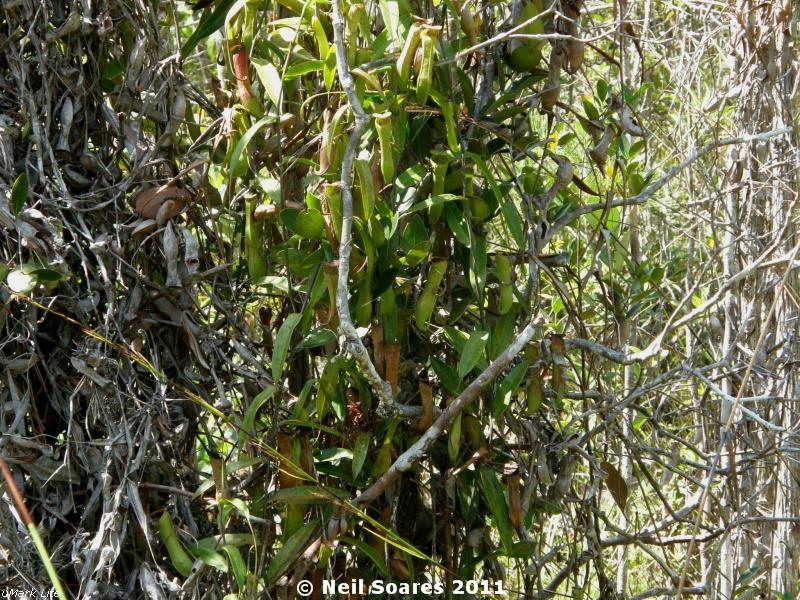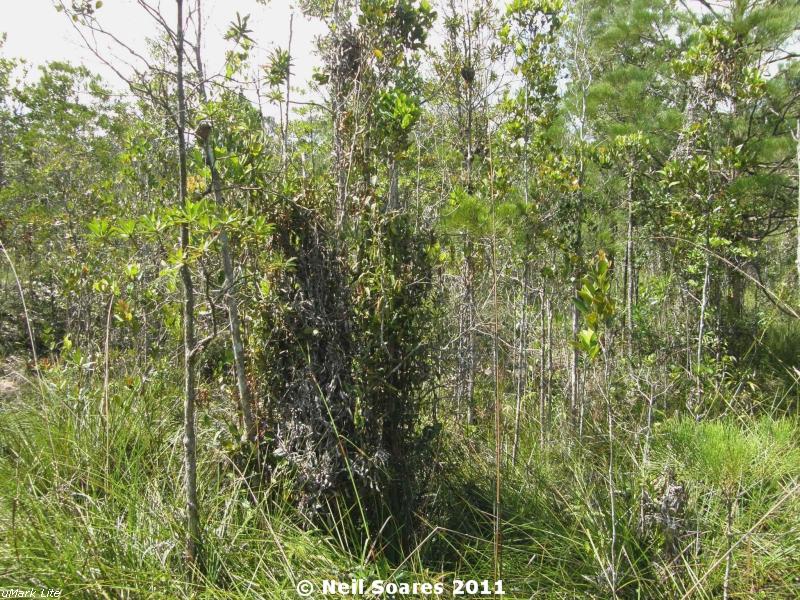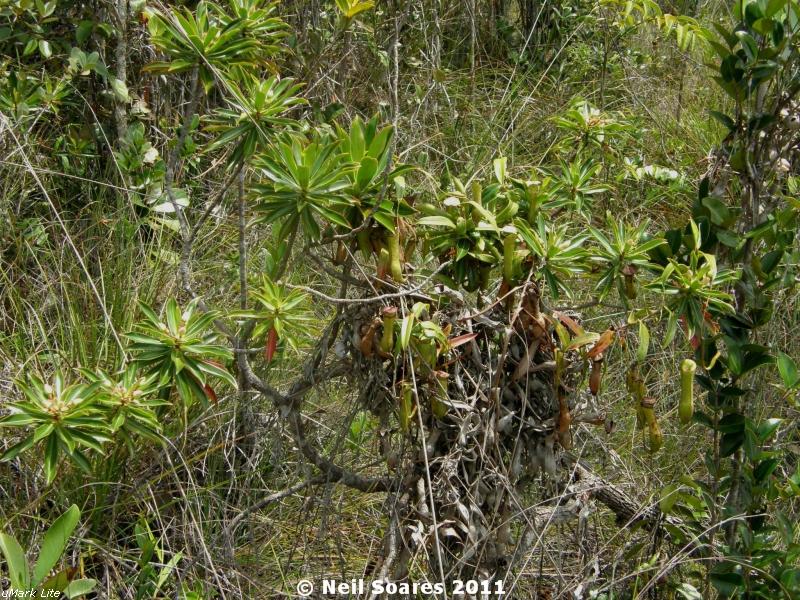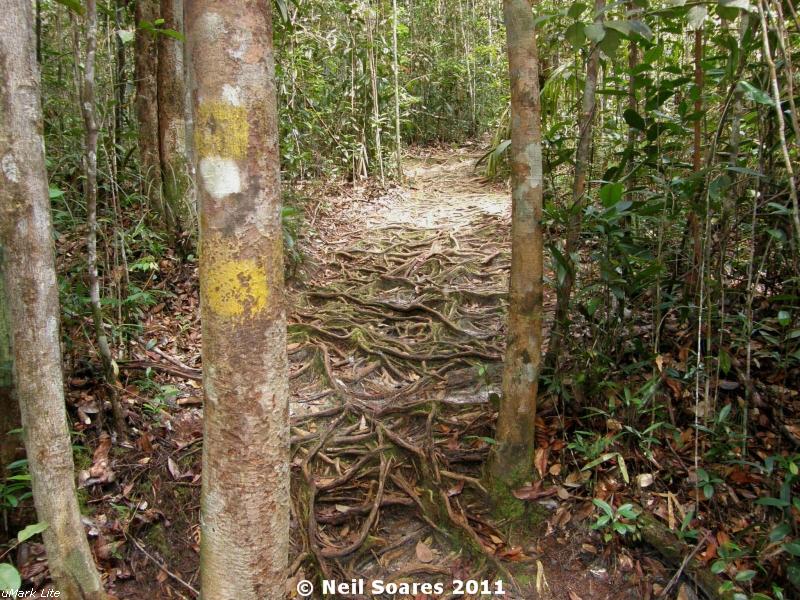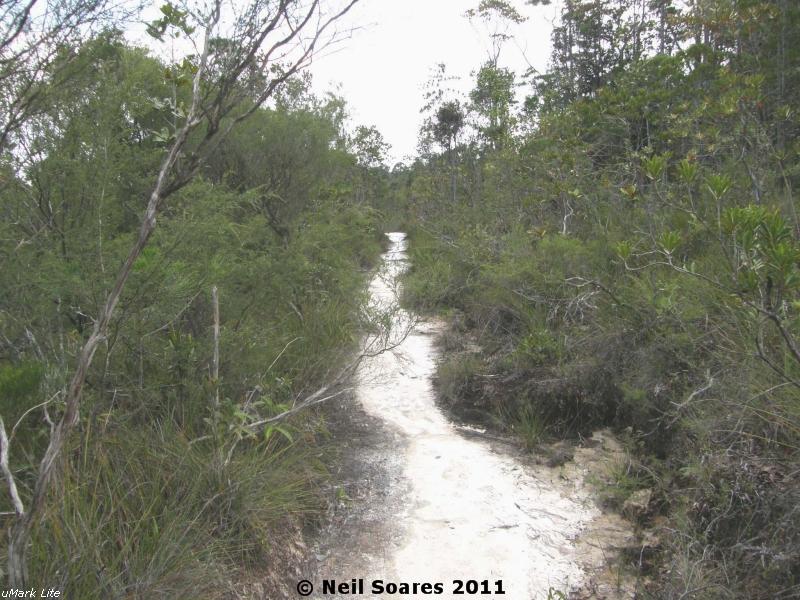|
Nepenthes mirabilis (Lour.) Druce, Bot. Exch. Club Brit. Isles Rep. 4: 637 637 1916. (Syn: Nepenthes beccariana Macfarl.; Nepenthes phyllamphora Willd.; Phyllamphora mirabilis Lour.);
Australia (Cape York Peninsula), Borneo, Cambodia, Caroline Islands (Palau and Yap), China (Guangdong Province, Hainan,[16][17] Hong Kong, and Macau), D’Entrecasteaux Islands, Java, Laos, Louisiade Archipelago, Maluku Islands, Myanmar, New Guinea, Peninsular Malaysia, Philippines (Dinagat and Mindanao), Sulawesi, Sumatra, Thailand, and Vietnam.[14][18][19][20][21][22][23][24] It has also been recorded from many smaller islands, including Babi, Bangka, Banyak Islands, Batu Islands, Bengkalis, Enggano, Ko Lanta, Ko Tarutao, Langkawi, Mendol, Mentawai Islands (North Pagai, Siberut, Sipura, and South Pagai), Meranti Islands (Padang, Rangsang, and Tebing Tinggi), Nias, Penang, Phuket, Riau Islands (Lingga Islands and Riau Archipelago), Rupat,[25] Tawi-Tawi,[26] and possibly Wowoni as per Wikipedia;
Nepenthes mirabilis (Lour.) Druce Rep. Bot. Exch. Cl. Brit. Isles 1916, 637 (1917). Basionym: Phyllamphora mirabilis Lour. Fl. Cochinch. 2: 606. (1790)
Family: Nepenthaceae
Location: TBGRI, Palode, Trivandrum. Camera: Nikon D300+60mm Nikkor +Vivitar ringlflash. …………………………..
Other information [source: Wikipedia] Nepenthes mirabilis (pronounced /nɨˈpɛnθiːz mɪˈræbɨlɪs/, from Latin: mirabilis = wonderful), or the Common Swamp Pitcher-Plant, is a tropical carnivorous plant species of the pitfall trap variety.
It has by far the widest distribution of any Nepenthes species and is known from the following countries and regions: Borneo, Sumatra, Thailand, Peninsular Malaysia, Sulawesi, Maluku Islands, Myanmar, Cambodia, New Guinea, Australia, Philippines, Indochina, China, Hong Kong, Micronesia, Macau, and Palau.
It also exhibits great variabiliy with the most forms and varieties of any species in the genus, the most notable of which is N. mirabilis var. echinostoma, a rare variety endemic to Brunei and Sarawak that possesses an extremely wide peristome.
The conservation status of N. mirabilis is listed as Least Concern on the 2006 IUCN Red List of Threatened Species. In Hong Kong, it is a protected species under Forestry Regulations Cap. 96A.
According to Matthew Jebb and Martin Cheek, the pitchers of N. mirabilis are used as toy phallocrypts in New Guinea.
Re: Pitcher Plants 1 : 9 posts by 4 authors. Attachments (6)
Had encountered a few while trekking through the Kerangas [Heath Forests] of Bako National Park, Sarawak, Borneo.
Sending a few photographs
Thanks a lot for sharing the pics. Atleast you have seen them in wild, you are lucky…
And special thanks for Arundina graminifolia “Nepenthes”.
What species are they by the way? This one looks like N. khasiana but I thought they were endemic to India.
Ok let me rethink… this looks more like Nepenthes mirabilis. I am counting on the raised ring on the belly which is running around the pitcher.
Thanks, … You may be right in its id as Nepenthes mirabilis.
To me also appears close as per images at
Nepenthes mirabilis (Lour.) Druce : 3 posts by 2 authors. Attachments (5) – around 600 kb each.
Location: Hong Kong Park
Date: 15 August 2018
Elevation: 200 ft.
Habit : Cultivated
Yes this should be Nepenthes mirabilis. It is native to Hong Kong.
References:
|
Nepenthes mirabilis (Cultivated)
Updated on December 24, 2024

